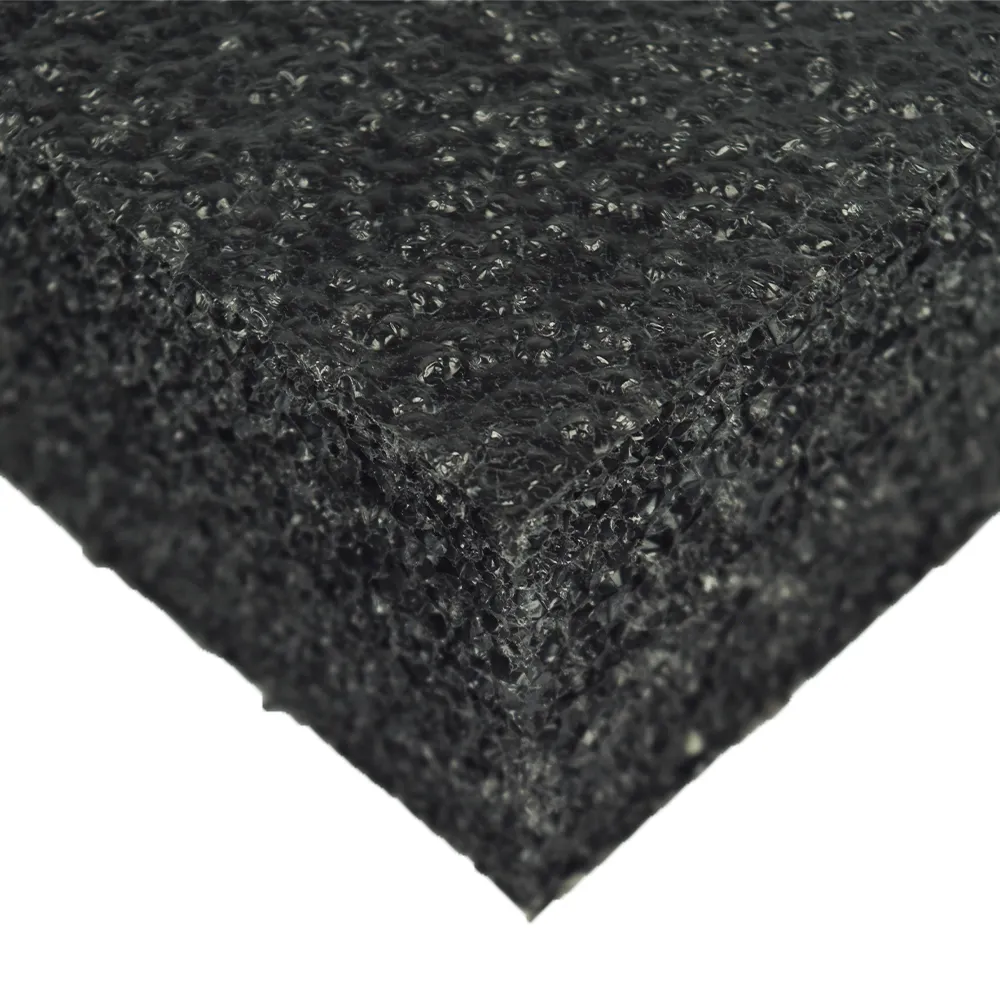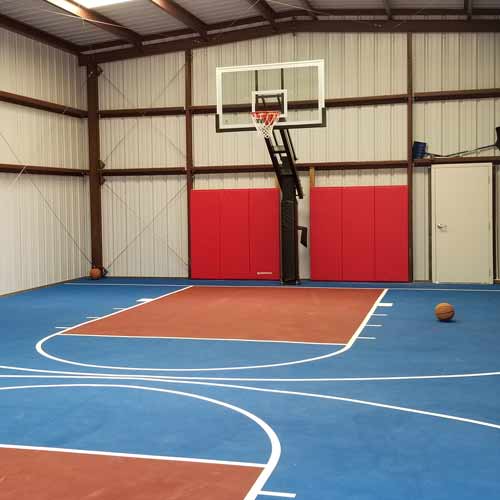What Kind of Foam Is Used In Gym Wall Mats?
Related Product: Gym Wall Padding All Sizes
Foam wall padding is an essential addition to any gym, as it protects against potential injury from colliding into a hard surface such as a wall or door. If the protective padding doesn’t exist, an extremely serious and even fatal injury could occur. What type of foam is wall padding made of? The answer to that question could affect how suitable the padding is for the job.
What Type of Foam Is Wall Padding Made Of?
Since the concern for athlete safety often tops the list, it is important to understand the different options for protection. Foam needs to absorb shock and impacts to protect athletes, and an ASTM F2440 rating is standard for athlete protection. To meet that standard requires a G-max of 200 or below and an HIC of 1000 or below.When selecting a foam wall pad, it’s helpful to know what kind of foam is used. Generally, athletic mats and pads are made of one of three foam materials - polyethylene, polyurethane, polychloroprene, or a combination of these.
Polyethylene Wall Mats

Quality wall mats for home, garage, or gym are made using a combination of vinyl and foam wall padding. One variety of foam used is a form of polyethylene, or PE, the most readily available and common plastic used in manufacturing. It is made primarily through an extrusion process, in which a complex, cross-sectional profile is established - creating a fine, closed-cell foam that is very rigid, stable, and durable.
This foam has outstanding insulation properties and does an excellent job of dampening vibrations. It also carries high impact strength, so it can absorb a lot of energy before becoming damaged. Because it is cross-linked, it is also able to return to its original shape after being stretched, punched, pulled, or squished.
PE is moisture-resistant - something that is imperative in a gym environment where sweat and water are prevalent. It will also resist the absorption of chemicals, making cleanup and sanitization of the foam wall padding worry-free. PE foam resists the growth of mildew, mold, and bacteria.
One downfall of this type of foam wall padding is that it doesn’t ''soften the blow'' as well as some other options do. It creates a firmer feel than polyurethane foam and protects against high impacts, but if you’re slammed into this type of padding, the energy is not broadly distributed. It will not be as soft and cushy as other options will be. This is a great option for a garage or home gym, as the stability of the foam is an attractive option where environmental vulnerabilities may exist. It’s also great for a wall mat because of its unmatched stability.
Polyurethane Wall Pads

Although more commonly used in folding or crash mats, another material sometimes used in foam wall padding is polyurethane, or PU. PU is a low-density material that is composed of polymers made of molecular chains that are bound together by urethane links. The resulting foam is low-density and is softer than PE, although it is also not as strong or stable. It is an excellent foam wall padding base for noise reduction, vibration dampening, and high impact absorption, which are top priorities, such as is the case for indoor batting cages and/or hockey arenas. The foam is generally very thick and provides a protective cushion as it absorbs the impact by crushing and collapsing. It does not spring back or provide much resistance.
Unlike PE, PU is an open-cell foam and can absorb water, so it’s more susceptible to mildew, fungus, mold, rot, and bacteria. It isn’t as chemically resistant as PE and is also more susceptible to corrosion than PE. However, if kept dry, none of these problems should arise.
Polychloroprene Wall Pads

When fire safety is essential for your project, then chances are you’ll need a polychloroprene wall pad. Polychloroprene foam is used for fire-rated pads, and it’s heavier than polyurethane and polyethylene foam. For example, a 2x6-foot wall pad is 10 pounds heavier when crafted with polychloroprene foam than it is when crafted with polyurethane or polyethylene foam.
Also called neoprene foam, polychloroprene foam is a synthetic rubber. It’s highly durable and flexible, plus it’s known for providing excellent cushioning and insulation. This foam is a closed-cell structure, and it’s available in numerous densities, which can affect its cushioning. The foam is tear-resistant, plus it’s resistant to heat, flames, oils, solvents, and many chemicals. It also provides good insulation against heat and cold, plus it won’t degrade when exposed to sunlight.
While there are many benefits of polychloroprene foam, it has some drawbacks, too. It’s more expensive than other types of foams, and its heavier weight can make installation a bit more difficult. But, if you’re looking for fire resistance, this foam is a must-have.
Foam Material Comparison
| Foam Type | Key Benefits | Drawbacks | Best For |
|---|---|---|---|
| Polyethylene (PE) | Firm, extremely stable, moisture- and chemical-resistant, closed-cell, durable | Less soft cushioning than other foams | Home gyms, garages, and wall pads where stability matters |
| Polyurethane (PU) | Soft, low-density, excellent impact absorption, great for noise and vibration reduction | Absorbs moisture; less durable | Batting cages, hockey rinks, and areas needing maximum cushioning |
| Polychloroprene | Fire-rated, highly durable, chemical- and heat-resistant, excellent insulation | Heavier and more expensive | Fire-code-required applications and high-safety environments |
Contact Greatmats for Your Foam Wall Padding Needs
Whether you’re looking to purchase foam wall padding for your home, garage, fitness center, or school gymnasium, Greatmats well-trained experts are ready to help you discover the option that is perfect for your space and budget.Contact us today to learn more about our gym wall mats, the foam type options, and which mat may be right for your needs.













